17 products

- White Wine
- Sustainable
- Dry
- Residual Sugar: 2.00 g/l
- Medium Bodied
- 750ml
- 13.50% alc./vol
Press Reviews
James Suckling
94 Points
Aromas of apple tart with brioche as well as toffee and butter cookie. Medium- to full-bodied with creamy texture and a creme caramel finish. Rich yet featherlight at the same time. Drink or hold.
- White Wine
- Grechetto
- Organic
- Dry
- 750ml
- White Wine
- Chardonnay
- Organic
- Dry
- Medium Bodied
- 750ml
- 13% alc./vol
About the Winery
Domaine du Château de La Chaize
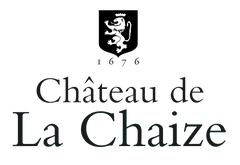
Château de La Chaize is among the oldest, most historic estates in Burgundy’s Beaujolais region. Cared for by the same family for nearly three and a half centuries, the estate has been passed on to new owners, the Gruy family, who are equally committed to managing the estate with the utmost care, while implementing an ambitious environmental plan. Among the many initiatives is the conversion of all vineyards to organic farming, the adoption of precision viticulture, reducing carbon their carbon footprint, and recycling every by-product from viti- and vinicultural activity, to achieve zero waste.
Founded in 1670 by the seneschal of Lyon François de la Chaize d’Aix, the main Château de la Chaize building and gardens were completed by Jules-Hardouin Mansart and André le Nôtre, respectively architect and gardener of the Château de Versailles. Château de la Chaize is among the oldest, most historic estates in Burgundy’s Beaujolais region. Boasting over 250 acres of vineyards, it is also one of the largest. It is today considered one of the most innovative estates in Burgundy. Among its forward- thinking practices is the adoption of eco-friendly farming techniques, commonly referred to as Agriculture Raisonnée. Chemical treatments have been reduced to a strict minimum, for example, and the growing of grass between rows has been re-introduced to enrich the soil and reduce erosion.
Press Reviews
Wine Enthusiast
90 points
This Beaujolais estate also has vines in Pouilly-Fuissé to the north. The wine has good minerality as well as ripe apple and spice. Lightly wood aged, it is a rich, structured and fruity. Drink the wine from late 2020. - Roger Voss
- White Wine
- Chenin Blanc
- Organic, Vegan-Friendly
- Dry
- Full Bodied
- 750ml
- 13.50% alc./vol
About the Winery
Château de Parnay
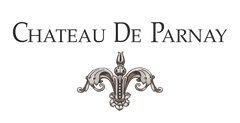
Château de Parnay is the flagship of the AOC Saumur Champigny. The property is located along the Loire river, classified as UNESCO World Heritage, on the most reputable clay and limestone terroirs of the appellation. The historic property was taken over by Mathias Levron & Régis Vincenot in 2006 with the aim of restoring the nobility of this special place.
Drawing their strength from the authenticity of their values, they now cultivate 50 hectares of vines with the aim of producing exceptional wines in a way that respects the environment. They have been certified organic since 2013 and are about to be certified biodynamic too.
The Clos of Chemin des Murs is the jewel of the property! Coming from the imagination of it's orginal owner, Antoine Cristal, this Clos was built, planted and cultivated according to an unprecedented technique. On this half hectare of Chenin Blanc, each vine was planted on the north face of a stone wall. Through a hole in the stone the vine crosses through the wall and allowing the grapes to grow facing the southern sunshine. The vine is said to have its 'foot in the cool and belly in the sun'.
Press Reviews
Wine Align
92 points - David Lawrason
This is from a leading Saumur producer of Loire chenin blanc with vines planted in calcerous clay soils near the Loire River outside of classical town. It is both rich and delicate, a juxtaposition I find in some of the world's best whites. It is not however an intense, flashy, acid and mineral driven chenin. Fermentation in neutral barrels has created a pale gold hue and softened the nose to gentle honeyed, spicy state along with ripe pear/apricot jam fruit. It is medium-full bodied, smooth and dry, almost creamy, with the grape's acidity and minerality arriving more on the finish. The complexity and length are excellent, with a touch of wood spice and bitterness as well. Tasted August 2022
94 points - John Szabo
2019: This leads with a terrific nose very much in the varietal/regional idiom, honeyed, floral, apple and lemon zest-scented, complex and exotic, not to mention stony. The palate displays a similar level of poise and composure, cool, transparent yet with a heavy freight of flavour , and terrific length. This is really quite extraordinary wine, delicious now, but surely capable of a decade or so in the cellar. Top notch. Tasted March 2019.
93 points - Michael Godel
2019: The rare and elusive 100 per cent chenin blanc from Samur makes full use of clay-calcaire-tuffeau soils for this dry and piqued white wine. So crunchy and expressive with an expansive character that fills the mouth by making contact withy every nerve and pour. Benchmark and controlled explosive example, rare or otherwise. Drink 2020-2025. Tasted March 2020.
91 points - David Lawrason
2019: It is rare to come across fine Saumur chenin, a central Loire Valley appellation overshadowed by Vouvray. This is mid-weight, dry and quite firm classic with a fairly generous nose of pear, spice, vague fresh herbs and wet stone. It becomes quite dry and somewhat grapefruity bitter on the finish, trailing solid minerality as well. Very good to excellent length. Tasted March 2020.
- White Wine
- Chardonnay
- Organic, Sustainable
- Dry
- Residual Sugar: 2.00 g/l
- Medium Bodied
- 750ml
- 13.00% alc./vol
Press Reviews
Decanter World Wine Awards
97 Points
100% Chardonnay. After a Platinum win for Elgin Chardonnay last year, we all suspected it was only a matter of time before this propitious combination of variety and region would make its way into our Top Fifty. So it proved this year, as this high-sited (200m-450m), mountain-fringed zone in the Cape's deep, ocean-cooled south brought us one of the most memorable of this year's Chardonnay cohort. It's pale dawn-yellow in colour, with taut yet close-knit aromas that suggest plant sap, peeled vegetable and spring leaf as much as green fruits. The 11 months' oak provide an aromatic backdrop without obscuring vineyard character. On the palate, the wine is lean, shapely, intense: a cool waterfall of Chardonnay fruits which sweep seamlessly over the tongue, leaving it looking for more. Drinkability, refreshment and a unique regional style come together memorably here. Best in Show.
- White Wine
- Chardonnay
- Sustainable, Volcanic
- Dry
- Residual Sugar: 2.00 g/l
- Medium Bodied
- 750ml
- 13.00% alc./vol
Press Reviews
James Suckling
96 Points
Complexity and lots of stamina and verve here! Smoky lemons, nougat, ginger and flint provide a very flavourful palate. Intense and substantial on the palate, but still elegant and nuanced, with a hint of phenolics at the end. Long, focused finish. Think fine Meursault. Drink or hold.
Robert Parker
95 Points - Luis Gutiérrez
The 2020 Selección de Parcelas Los Primos Chardonnay was cropped from a warm and dry vintage, but in Traiguén in the south, it is not as warm as in the central valley of Chile. The grapes were harvested the first half of April; they harvested earlier and finished with more alcohol, still a moderate 13.5%, from a year of more body and rounder wines but without heat. The wine kept a pH of 3.16 and 6.9 grams of acidity. This also makes the wine a little more Burgundian, more Meursault than Chablis or Puligny, tasty, spicy with a tad more oak (all the new barrels for white are 400-liter ones, 38% of them new in 2020), because in warmer years there is a little more extraction from the oak. This is the warmest vintage so far, but the wine is still bone dry and there is no ripeness; but there's more weight and width. The wines have to show the differences of the climate conditions each year... 4,069 bottles were filled in July 2021.
- White Wine
- Sauvignon Blanc, Sauvignon Gris
- Organic, Vegan-Friendly
- Dry
- Medium Bodied
- 750ml
- 13% alc./vol
About the Winery
Réva
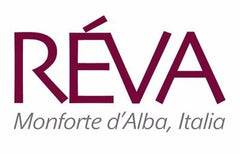
Réva is a winery based in Monforte D’Alba, within the Langhe area, in Piedmont, west northern Italy. Its aim is to bring the most brilliant young people of the area together, entrusting them with the task of expressing themselves in the most creative and professional way possible. This is Réva’s Wave, a dynamic team that represents the new Langhe generation, in constant communication with tradition, without the fear of reinterpreting it.
Today the vineyard sites which spread over 4 villages, Monforte D’Alba, Serralunga D’Alba, Novello and Barolo are all managed directly with the entire agronomic work done manually. Strong sustainable vineyards conduction, certified organic, they believe that their biggest challenge is not inventing anything but just define and express the beauty of the land where they live.
Behind every glass of wine there is an expression, expression of terroir, varietal, the varietal is for them everything, indigenous, they speak of the land and, last but not least, passion for what they do. Simply as that.
- White Wine
- Clairette, Grenache Blanc, Marsanne, Picpoul
- Organic, Vegan-Friendly
- Dry
- Full Bodied
- 750ml
- 13.50% alc./vol
About the Winery
Château de Montfaucon
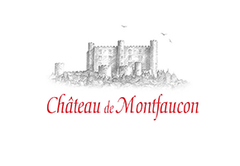
Just across the Rhone river from the beautiful vineyards of Chateauneuf-du-Pape, the Lirac appellation extends itself on the low hills alongside the river. The history of Château de Montfaucon dates back to the 11th century when the castle's first tower was built. The castle's role in history was strategic; the Rhône River was the border between the French Kingdom and the Holy Roman German Empire. Montfaucon was one of many castles and fortresses along the Rhône River constructed to guard the border.
Rodolphe de Pins took over the family estate of Montfaucon in 1995 and subsequently rebuilt the winery and began practicing sustainable agriculture. He honed his winemaking skills in Barossa at Henschke and Vieux Telegraphe in Châteauneuf du Pape before returning to Lirac, so needless to say, his familiarity with the local varieties is well established.
Press Reviews
Wine Align
92 points - Michael Godel
Comtesse Madeleine may not be a Rhône original out of the Lirac appellation but my if it does not strike as something profound. The blend is 40 per cent each marsanne and clairette with (10) grenache blanc (plus perhaps a splash of picpoul) for a devilishly flinty white with a veritable scent of animal musk, like porchetta releasing that tell-tale aroma just after the skin begins to render at heat. This is the real deal in French white wine for which the blending process and subsequent elévage can pull out meaning to change the way wine will speak to those that are listening. Intently in this case and for great reason. Drink 2023-2026. Tasted February 2023.
92 points - Sarah d'Amato
A lively and characterful blend of marsanne, clairette and grenache blanc. Expressive and concise with freshness created through a combination of acidity and minerality. Features notes of rosebud, honeysuckle and ginger spice along with thyme, pear, lanolin, fresh fig and lemon. A compelling assemblage that brings new dimension and complexity through a succession of undulating sensorial waves. Honestly made with a light-handed touch. Balanced and lengthy. Tasted February 2023.
91 points - Megha Jandhyala
This is an aromatically expressive blend of clairette, grenache blanc, marsanne, and picpoul, from Lirac, an appellation that lies just across the Rhône river from famed Châteauneuf-du-Pape. I really like its glossy, smooth texture and flavours of apricots, lemons, and grapefruits, alongside subtle notes of vanilla and wet stones. The palate is integrated and balanced, with a sense of both richness and freshness. The finish is graceful and long-lasting. Tasted February 2023 by Critic Understudy Megha Jandhyala.
Decanter
90 points
Distinctly nutty from the oak, macadamia, gently grilled elements to the fruit. Good acidity. Little touch of honeycomb on the finish. Acidity is balanced. Drinking window 2020 - 2022.
- White Wine
- Listán Blanco
- Sustainable, Vegan-Friendly, Volcanic
- Dry
- Medium Bodied
- 750ml
- 13% alc./vol
About the Winery
Viñátigo

Juan Jesús is a proud native of Tenerife and the fourth generation of growers. During the thirty years that he's overseen Bodegas Viñátigo, he has considerably increased its holdings, planting varieties that he and his team recuperated from near extinction.
Driven by passion and love for his homeland, Juan decided to revive and work to save the native grape varieties that were brought to the Canary Islands by the conquers back in the 15th century and that had survived on the islands for centuries. He is a hero of contemporary Canarian viticulture. The wealth of knowledge that his work has created has helped underpin the significant expansion of wine styles that are now available throughout the archipelago, and his wines have achieved a calibre of class that many doubted the Canaries would ever produce again. (The Epic Wines of the Canary Islands, written by Santo Bains).
Press Reviews
Robert Parker
92 points
The 2022 Camino de La Peña is one of the new single-vineyard certified wines from the DOP Islas Canarias, Tenerife appellation. It was produced with Listán Blanco grapes from a plot of vines in Altos de Icod in the Icod Valley in the northeast of Tenerife and pruned in the traditional parral, or pergola, way on terraces on young volcanic (basalt) soils with sand and minerals. The juice from the pressing with part of the stems was let to settle and fermented with indigenous yeasts in stainless steel, where the wine matured with static lees (not stirred) for nine months. Despite the moderate 12.7% alcohol, this has a riper nose than the other whites, with notes of yellow fruit, plums and peach, and a gentle and polished palate with soft acidity and a bitter twist in the finish. 2,835 bottles were filled in August 2023.
Viñátigo, the project from Juan Jesús Méndez, was one of the pioneers of the local varieties in the Canary Islands, where he's been recovering forgotten varieties since 1990. He's now joined by his son Jorge, who is giving a more modern profile to the wines. In 2017, there was a new range of single-vineyard and lieu-dit wines that go one step beyond in 2022, with three new whites from the north of Tenerife. They are all produced with Listán Blanco from different zones and altitudes, climates and soils. They have 12 hectares of vines in the north and northeast of Tenerife, and their production averages 150,000 bottles per year.
Published: Nov 30, 2023
- White Wine
- Listán Blanco
- Sustainable, Vegan-Friendly, Volcanic
- Dry
- Medium Bodied
- 750ml
- 13% alc./vol
About the Winery
Viñátigo

Juan Jesús is a proud native of Tenerife and the fourth generation of growers. During the thirty years that he's overseen Bodegas Viñátigo, he has considerably increased its holdings, planting varieties that he and his team recuperated from near extinction.
Driven by passion and love for his homeland, Juan decided to revive and work to save the native grape varieties that were brought to the Canary Islands by the conquers back in the 15th century and that had survived on the islands for centuries. He is a hero of contemporary Canarian viticulture. The wealth of knowledge that his work has created has helped underpin the significant expansion of wine styles that are now available throughout the archipelago, and his wines have achieved a calibre of class that many doubted the Canaries would ever produce again. (The Epic Wines of the Canary Islands, written by Santo Bains).
Press Reviews
Robert Parker
93 points
The 2022 Lomo de la Era, another of the new single-vineyard certified wines from the DOP Islas Canarias, Tenerife appellation, was produced with Listán Blanco grapes, in this case from a cordón trenzado plot of vines in the western part of the Orotava Valley on sandy, silty and basalt soils. The juice from the pressing with part of the stems was let to settle and fermented with indigenous yeasts in concrete, where the wine matured with static lees (not stirred) for nine months. It has moderate ripeness and alcohol (12%) with a mixture of floral, fruit and soil notes and an austere palate with dusty minerality, vibrant and pungent flavors and a clean finish. 2,320 bottles were filled in July 2023.
Viñátigo, the project from Juan Jesús Méndez, was one of the pioneers of the local varieties in the Canary Islands, where he's been recovering forgotten varieties since 1990. He's now joined by his son Jorge, who is giving a more modern profile to the wines. In 2017, there was a new range of single-vineyard and lieu-dit wines that go one step beyond in 2022, with three new whites from the north of Tenerife. They are all produced with Listán Blanco from different zones and altitudes, climates and soils. They have 12 hectares of vines in the north and northeast of Tenerife, and their production averages 150,000 bottles per year.
Published: Nov 30, 2023
92 points
The 2022 Camino de La Peña is one of the new single-vineyard certified wines from the DOP Islas Canarias, Tenerife appellation. It was produced with Listán Blanco grapes from a plot of vines in Altos de Icod in the Icod Valley in the northeast of Tenerife and pruned in the traditional parral, or pergola, way on terraces on young volcanic (basalt) soils with sand and minerals. The juice from the pressing with part of the stems was let to settle and fermented with indigenous yeasts in stainless steel, where the wine matured with static lees (not stirred) for nine months. Despite the moderate 12.7% alcohol, this has a riper nose than the other whites, with notes of yellow fruit, plums and peach, and a gentle and polished palate with soft acidity and a bitter twist in the finish. 2,835 bottles were filled in August 2023.
Viñátigo, the project from Juan Jesús Méndez, was one of the pioneers of the local varieties in the Canary Islands, where he's been recovering forgotten varieties since 1990. He's now joined by his son Jorge, who is giving a more modern profile to the wines. In 2017, there was a new range of single-vineyard and lieu-dit wines that go one step beyond in 2022, with three new whites from the north of Tenerife. They are all produced with Listán Blanco from different zones and altitudes, climates and soils. They have 12 hectares of vines in the north and northeast of Tenerife, and their production averages 150,000 bottles per year.
Published: Nov 30, 2023
- Red Wine, White Wine
- Cabernet Franc, Chenin Blanc
- Organic, Vegan-Friendly
- Dry
- Full Bodied
- 750ml
- 13.50% alc./vol
About the Winery
Château de Parnay

Château de Parnay is the flagship of the AOC Saumur Champigny. The property is located along the Loire river, classified as UNESCO World Heritage, on the most reputable clay and limestone terroirs of the appellation. The historic property was taken over by Mathias Levron & Régis Vincenot in 2006 with the aim of restoring the nobility of this special place.
Drawing their strength from the authenticity of their values, they now cultivate 50 hectares of vines with the aim of producing exceptional wines in a way that respects the environment. They have been certified organic since 2013 and are about to be certified biodynamic too.
The Clos of Chemin des Murs is the jewel of the property! Coming from the imagination of it's orginal owner, Antoine Cristal, this Clos was built, planted and cultivated according to an unprecedented technique. On this half hectare of Chenin Blanc, each vine was planted on the north face of a stone wall. Through a hole in the stone the vine crosses through the wall and allowing the grapes to grow facing the southern sunshine. The vine is said to have its 'foot in the cool and belly in the sun'.
Press Reviews
Wine Align
94 points - John Szabo
Château de Parnay Chemin des Murs Saumur Blanc 2019.
This leads with a terrific nose very much in the varietal/regional idiom, honeyed, floral, apple and lemon zest-scented, complex and exotic, not to mention stony. The palate displays a similar level of poise and composure, cool, transparent yet with a heavy freight of flavour , and terrific length. This is really quite extraordinary wine, delicious now, but surely capable of a decade or so in the cellar. Top notch. Tasted March 2019.
93 points - Michael Godel
Château de Parnay Chemin des Murs Saumur Blanc 2019.
The rare and elusive 100 per cent chenin blanc from Samur makes full use of clay-calcaire-tuffeau soils for this dry and piqued white wine. So crunchy and expressive with an expansive character that fills the mouth by making contact withy every nerve and pour. Benchmark and controlled explosive example, rare or otherwise. Drink 2020-2025. Tasted March 2020.
91 points - David Lawrason
Château de Parnay Chemin des Murs Saumur Blanc 2019.
It is rare to come across fine Saumur chenin, a central Loire Valley appellation overshadowed by Vouvray. This is mid-weight, dry and quite firm classic with a fairly generous nose of pear, spice, vague fresh herbs and wet stone. It becomes quite dry and somewhat grapefruity bitter on the finish, trailing solid minerality as well. Very good to excellent length. Tasted March 2020.
- White Wine
- Chardonnay
- Dry
- Residual Sugar: 2.00 g/l
- Medium Bodied
- 750ml
- 13.50% alc./vol
Press Reviews
Vinous Media
90 Points - Neal Martin
The 2022 Chablis Bougros Grand Cru is aged for 16 months in stainless steel and 500 litre barrels. It is pretty neutral on the nose and doesn't really engage the senses as I would have liked. The palate is balanced with a fine bead of acidity. It's taut and fresh, with a touch of sour lemon towards the finish. It's not bad, although its more Premier Cru than Grand Cru, to be honest. Tasted blind at the BIVB tasting in Chablis.
- White Wine
- Pinot Gris
- Biodynamic, Organic, Vegan-Friendly
- Dry
- Residual Sugar: 6.00 g/l
- Light Bodied
- 750ml
- 13.50% alc./vol
About the Winery
Domaine Muré
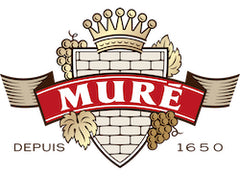
The Muré family has been winegrowers in the region of Rouffach since 1650. In 1935, Alfred Muré, René’s grandfather, bought 32 acres of family-monopole vineyard name Clos St. Landelin, an area that has been described as the best of Alsace Grand Cru since the 7th Century.
Today, René Muré, the 11th generation of the family, along with his children, Véronique and Thomas, are responsible for running their exceptional Grand Cru vineyard and neighbouring terroirs using biodynamic methods. Until this day, they persist in hand-picking every single grape, and focus on crafting wines that preserve the family’s credo. The resulting wines are some of Alsace's finest – powerful, elegant, and age-worthy.
Press Reviews
James Suckling
95 Points - Stuart Pigott, Senior Editor
At once ripe and rich, but with a lovely freshness and properly dry this is a stunning Alsace pinot gris with very ripe melon and citrus aromas, even a touch of orange blossom. Very long finely nunaced finish. From biodynamically grown grapes with Demeter certification. Drink or hold.
- White Wine
- Grenache Blanc, Roussanne
- Organic, Sustainable
- Dry
- Residual Sugar: 2.00 g/l
- Full Bodied
- 750ml
- 14.00% alc./vol
Press Reviews
Decanter
95 Points - Matt Walls
A touch smoky, flinty, this is tight and tense on the palate, dry and savoury. It's really quite focused, never overly fat, with a long, straight finish. Should age with interest. Domaine Chante Cigale continues to rise up the rankings of white Châteauneuf producers – consistently excellent. Perfect balance. Fermented then aged for 10 months in demi-muids. Just 850 bottles made.
- White Wine
- Chardonnay
- Sustainable
- Dry
- Residual Sugar: 2.00 g/l
- Medium Bodied
- 750ml
- 13.00% alc./vol
About the Winery
Groupe Bellene
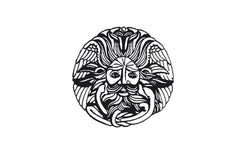
Led by Nicolas Potel in Beaune, Groupe Bellene is composed of the négociant arm Maison Roche de Bellene, the winery arm Domaine de Bellene, and a special back-vintage series under the Collection Bellenum label.
- Maison Roche de Bellene offers a complete range of wines, with an emphasis on individual terroirs from old vines of more than 40 years. All of the growers that Nicolas works with are either organic certified or sustainably farmed.
- Domaine de Bellene represents the wines that are produced and bottled from Nicolas Potel's private vineyard holdings.
- Collection Bellenum is a back vintage series that Nicolas Potel sourced from his friends in the region, offering a magnificent selection of bottled history. The wines have moved only twice in their lives, from the original cellar to Potel's and now to yours!
Nicolas Potel grew up at Volnay's Domaine Pousse d'Or, where his father worked. He trained abroad and returned home in 1996 to build a négociant business and started Maison Nicolas Potel, where he sourced grapes from good parcels, often working with the growers to improve the quality. By 2002, he was making 120 wines from 50 different appellations, and the rest is history!
- White Wine
- Chardonnay
- Sustainable, Volcanic
- Dry
- Residual Sugar: 2.00 g/l
- Medium Bodied
- 750ml
- 13.50% alc./vol
About the Winery
Vinos Baettig

Francisco Baettig and Carlos de Carlos have been friends for more than 20 years and share a passion for high-quality wines that are genuine and connected to the land where they are made.
"A promising project in a wine region that is the future of high-quality Chilean wines" - Patricio Tapia, Descorchados
Press Reviews
James Suckling
98 Points - Zekun Shuai, Senior Editor
Pure mineral notes but a lot of depth here, with flinty oyster shells, crushed rock, lemon zest and a hint of cream. Broad but pure on the palate, driven by a bright streak of saline acidity. Really gastronomic and serious, with a full body but mineral water-like purity at the end. Another sensational Los Primos. According to winemaker Francisco Baettig, 2022 is moderately cool in Traiguén. A small production due to the frost. Picked around April 10. Thirteen months’ aging in 300- to 400-liter barrels, of which 37% is new.
Vinous Media
97 Points - Joaquín Hidalgo
The 2022 Chardonnay Viñedo Los Primos originates from Traiguén in the Araucanía region. Aged for 13 months in French oak barrels (37% new), it displays a green colour with a yellowish sheen. Aromas of creamed corn and cedar emerge on the nose, accompanied by hazelnut, oak and ginger nuances. Dry, rich and fairly rich on the palate it develops a fatty and oily mouthfeel that adds depth and volume without heaviness. The 13.5% alcohol content contributes to an overwhelming mouthfeel but its balanced by taut acidity , resulting in a long-lasting flow. Compared to other vintages, the 2022 offers a more finely tuned balance.
- White Wine
- Chardonnay
- Sustainable, Volcanic
- Dry
- Residual Sugar: 2.00 g/l
- Medium Bodied
- 750ml
- 13.50% alc./vol
About the Winery
Vinos Baettig

Francisco Baettig and Carlos de Carlos have been friends for more than 20 years and share a passion for high-quality wines that are genuine and connected to the land where they are made.
"A promising project in a wine region that is the future of high-quality Chilean wines" - Patricio Tapia, Descorchados
Press Reviews
Wineanorak Global Wine Journal
94 Points - Jamie Goode
Complex but still fresh with some toast and honey, as well as ripe lemon and melon fruit with some orange peel character and a touch of hazelnut. Lovely depth and intensity here with nice bright acidity on the finish. This is evolving in nice ways.
















